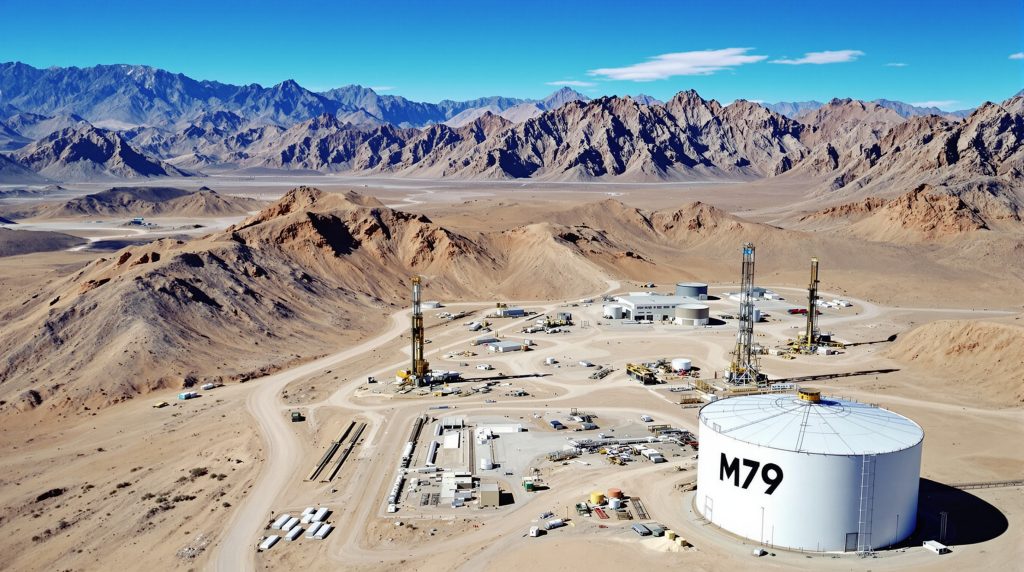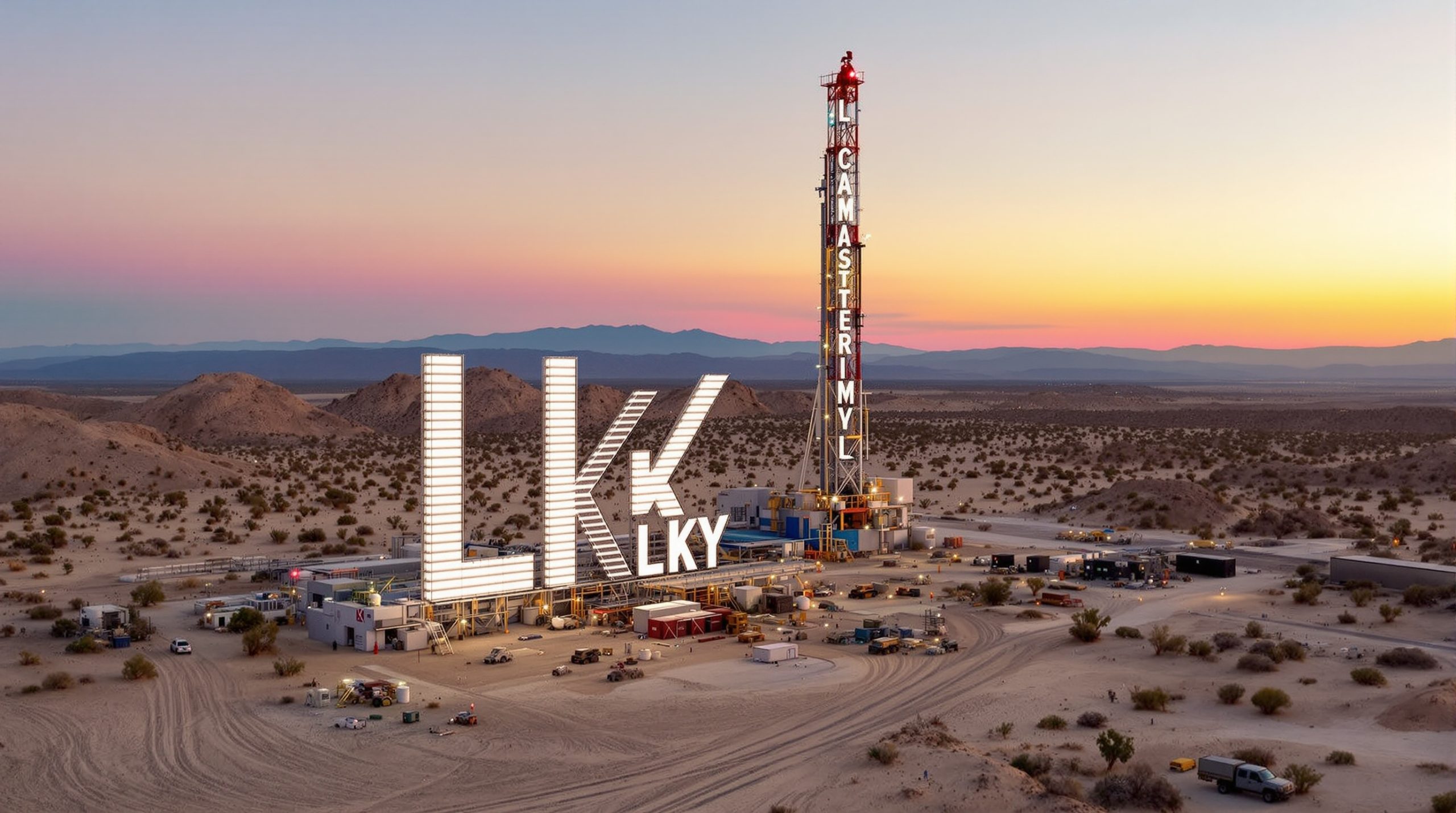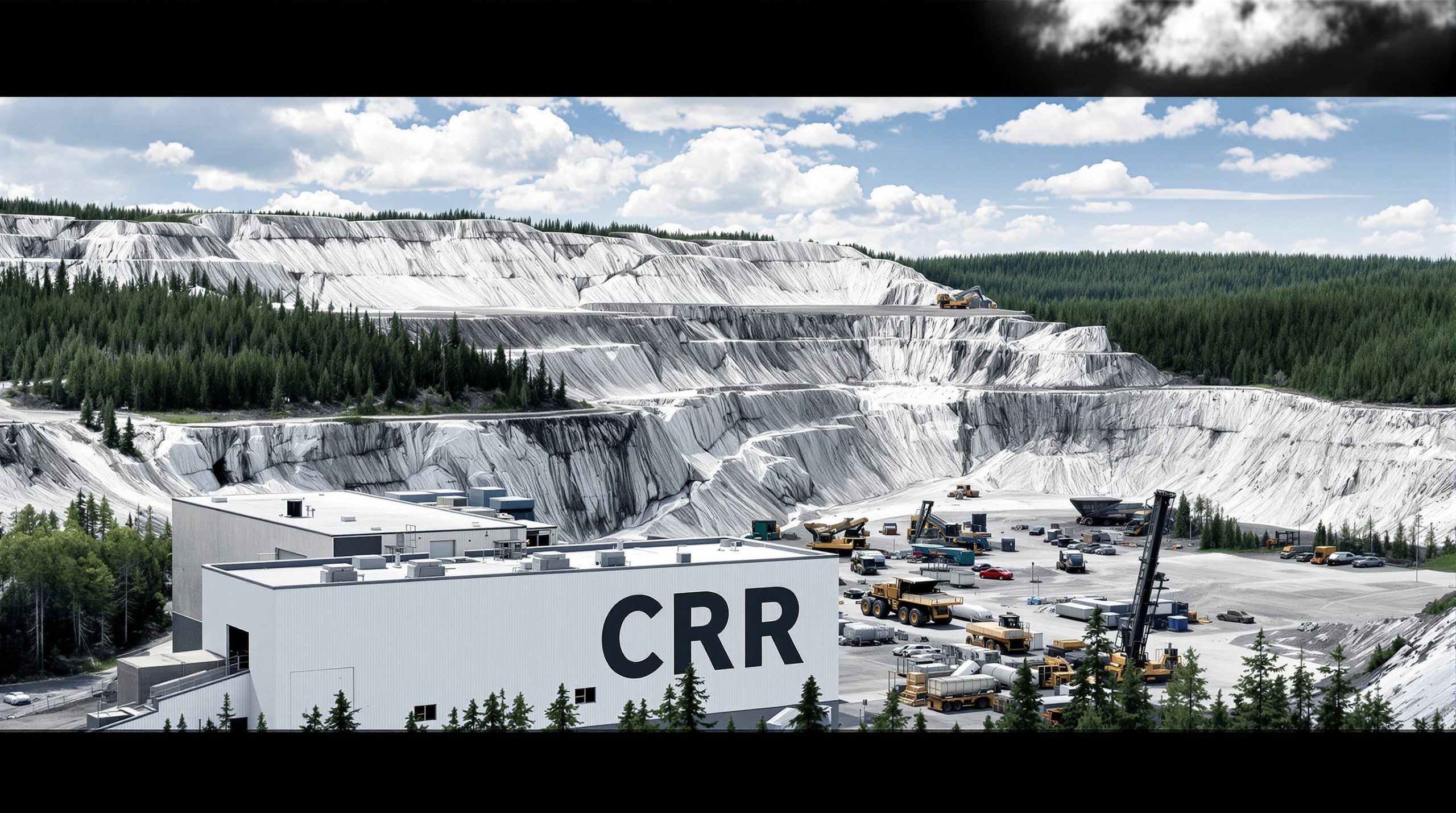Mammoth Minerals Expands Nevada Gold Project by 340% with Multi-Metal Discovery Potential
The Mammoth Minerals Nevada gold project expansion has dramatically reshaped the company's exploration potential in one of North America's most prolific mining regions. Mammoth Minerals Limited (ASX: M79) has expanded its Excelsior Gold Project in Nevada by 340%, increasing the total landholding to 83.6km² through strategic staking. The expansion has revealed multiple historical mineral occurrences across the newly acquired tenure, positioning the company to explore what appears to be an entire geological system driven by a potential causative intrusion.
The expanded landholding contains 11 documented mineral occurrences from the US Geological Survey database, including former gold, silver, tungsten, antimony, and copper producers. Furthermore, combined with extensive ground disturbances identified through LiDAR imagery, Mammoth has identified numerous exploration targets beyond those already catalogued in government databases.
Managing Director Glenn Poole commented:
"We staked what we have now interpreted to be an entire metallogenic system arising from the potential causative intrusion, extending across the various historical mineral occurrences identified from the data and now joining up with the original Excelsior Project."
Strategic Land Acquisition Reveals Historic Mining District
The newly staked claims encompass a 5km-long circular geological feature that appears to control mineralisation across the broader region. This systematic approach to land acquisition has connected previously isolated prospects into a cohesive exploration target. Consequently, the original Buster Trend now forms part of a much larger mineral system.
Key Historical Producers Within New Tenure
| Mine/Prospect | Commodities | Status | Significance |
|---|---|---|---|
| Old Buster Mine | Gold-Tungsten-Silver | Historic Producer | Past production facility |
| Kentucky Mine | Gold-Silver | Historic Producer | Established mining history |
| Lidia Queen Mine | Gold-Silver-Lead | Historic Producer | Multi-metal production |
| Palmetto Mine | Silver-Gold-Lead | Historic Producer | High-grade silver target |
| Mattmueller Mine | Antimony | Occurrence | Strategic metal potential |
The expansion also includes multiple copper occurrences (Reliance Prospect, Helpmeet Claim) and additional gold targets (Nevada Prospect, California Prospect, Paymaster Prospect). These findings demonstrate the diverse mineralisation potential across the enlarged project area.
Understanding Nevada's Walker Lane: A World-Class Gold District
The Walker Lane tectonic zone represents one of North America's most prolific gold-producing regions, with total production exceeding 20 million ounces. This northwest-trending belt of strike-slip fault zones has hosted legendary deposits including Goldfields (5 million oz), Comstock (8 million oz gold, 200 million oz silver), and Tonopah (2 million oz).
The geological setting combines structural controls with intrusion-related mineralisation, creating ideal conditions for both high-grade vein systems and bulk-tonnage disseminated deposits. In addition, Mammoth's expanded Excelsior Project sits within this proven gold-producing province, where the convergence of multiple geological processes has concentrated precious and base metals over geological time.
Why This Matters for Investors: Projects within established mining districts benefit from proven geology, existing infrastructure, and a regulatory environment familiar with mining operations. However, the Walker Lane's track record provides confidence in the exploration potential of Mammoth's expanded landholding.
Understanding Metallogenic Systems: The Science Behind District-Scale Discovery
A metallogenic system refers to the complete geological framework responsible for concentrating economic minerals across a region. These systems typically originate from a causative intrusion – a body of molten rock that forces its way into existing rock formations. For instance, this intrusion brings with it the heat, fluids, and chemical components necessary for mineral formation.
As these intrusive bodies cool, they release metal-rich fluids that travel through fractures and faults in the surrounding rock. The metals precipitate out of solution when conditions change, forming ore deposits at various distances from the original intrusion. This process explains why multiple mines and prospects often cluster around a central geological feature.
The 5km-long circular feature identified at Mammoth's expanded project area suggests the presence of such a causative intrusion. Furthermore, the distribution of the 11 documented mineral occurrences around the margins of this feature follows the classic pattern of metallogenic systems. In these systems, different metals concentrate at varying distances from the heat source.
This geological understanding has transformed modern exploration strategies. Rather than focusing on individual prospects, companies now seek to identify and secure entire metallogenic systems. Consequently, they recognise that multiple deposits may exist within a single geological framework.
Extensive Exploration Programme Underway
The Mammoth Minerals Nevada gold project expansion has prompted a comprehensive exploration strategy. Mammoth has launched a multi-faceted exploration campaign across the expanded project area, combining modern geophysical techniques with systematic ground-truthing of historical workings.
Current Exploration Activities
• High-resolution airborne magnetics completed across entire 83.6km² area
• LiDAR survey identifying previously unmapped ground disturbances
• Systematic rock chip sampling of MRDS occurrences and prospect areas
• Geological mapping using mineral systems approach
• Diamond drilling continuing on original Buster Trend
The LiDAR analysis has revealed numerous ground disturbances beyond those documented in government databases. This suggests extensive historical exploration and mining activity that warrants modern follow-up investigation.
Upcoming Milestones
| Activity | Timeline | Objective |
|---|---|---|
| Magnetics interpretation | Coming weeks | Define structural controls and intrusive targets |
| Rock sampling results | Q1 2025 | Prioritise follow-up targets |
| Soil geochemistry | Q1 2025 | Map geochemical halos |
| Target definition drilling | Q1-Q2 2025 | Test priority prospects |
Investment Thesis: Systematic Approach to District-Scale Discovery
Mammoth's 340% land expansion represents a strategic shift from prospect-specific exploration to district-scale evaluation. By securing an entire geological system rather than individual prospects, the company has positioned itself to potentially discover multiple deposits within a single landholding.
Competitive Advantages
Scale and Integration: The 83.6km² landholding encompasses what appears to be a complete mineral system, from source intrusion to peripheral deposits.
Proven Mineralisation: 11 documented mineral occurrences provide immediate drill targets with historical precedent for economic mineralisation.
Modern Technology Applied: High-resolution geophysics and systematic sampling are being applied to historical prospects that were never explored with modern techniques.
District Position: Located within the Walker Lane trend, North America's premier gold province with over 20 million ounces of historical production.
Valuation Context
Explorer landholdings in Nevada's Walker Lane typically trade at premiums due to proven geology and infrastructure access. However, the Mammoth Minerals Nevada gold project expansion represents a systematic approach to securing an entire geological system. This positions the company for potential multiple discoveries within a single project area.
Technical Data and Exploration Targets
The US Geological Survey's Mineral Resources Data System (MRDS) database provides documented evidence of mineralisation across Mammoth's expanded tenure. This comprehensive dataset includes precise coordinates, commodity types, and historical production records where available.
Commodity Distribution Analysis
| Commodity | Number of Occurrences | Significance |
|---|---|---|
| Gold | 8 occurrences | Primary exploration target |
| Silver | 6 occurrences | High-value co-product potential |
| Copper | 3 occurrences | Base metal diversification |
| Lead | 3 occurrences | Multi-metal system indicator |
| Tungsten | 1 occurrence | Strategic metal potential |
| Antimony | 2 occurrences | Critical mineral classification |
The diversity of metals identified within the expanded landholding supports the interpretation of a complete metallogenic system. Furthermore, the spatial distribution of these occurrences around the 5km-long circular feature provides strong geological evidence for a unified mineralising process.
The LiDAR survey has identified extensive ground disturbances including shafts, pits, and exploration trenches that were not previously documented in government databases. This suggests that historical exploration activity was more extensive than recorded. Consequently, this potentially indicates additional mineralisation beyond the catalogued occurrences.
Strategic Positioning in Global Context
Nevada's position as a leading gold-producing jurisdiction provides Mammoth with significant advantages beyond geological potential. The state's mining-friendly regulatory environment, established infrastructure, and skilled workforce create optimal conditions for exploration and potential development.
The Walker Lane tectonic zone continues to attract major mining companies and exploration investment. Recent discoveries are reinforcing the district's potential for new deposits. However, Mammoth's district-scale approach aligns with industry trends towards systematic exploration of entire geological systems rather than individual prospects.
The company's focus on the US market also positions it advantageously given current geopolitical considerations around critical mineral supply chains. With antimony and tungsten identified within the expanded tenure, Mammoth could potentially contribute to domestic supply of these strategically important materials.
Why Investors Should Monitor Mammoth Minerals
The Mammoth Minerals Nevada gold project expansion has transformed the company from a prospect-level explorer to a district-scale opportunity through strategic land acquisition. This expansion has occurred in one of North America's premier gold provinces. The company's systematic approach to exploration, combining historical data with modern techniques, provides multiple pathways to discovery across an 83.6km² landholding.
The upcoming magnetic survey results and systematic sampling programme will provide critical data for prioritising the numerous targets identified across the expanded project area. With active diamond drilling continuing on the original Buster Trend and 11 historical producers and prospects awaiting modern evaluation, Mammoth has created a robust pipeline of exploration opportunities.
The company's district-scale thinking, combined with its position in the proven Walker Lane gold belt, creates a compelling investment proposition. For instance, this positioning appeals to those seeking exposure to Nevada gold exploration. The potential for multiple discoveries within a single landholding differentiates Mammoth from single-prospect explorers. Consequently, it provides diversified exploration risk across numerous targets.
Key Takeaway:
Mammoth Minerals has positioned itself as a district-scale explorer in Nevada's Walker Lane gold province, with a 340% land expansion creating multiple discovery opportunities across a systematic geological approach to exploration. The combination of proven historical mineralisation, modern technology, and district-scale thinking provides significant upside potential for investors seeking exposure to Nevada gold exploration.
Could Mammoth's District-Scale Approach Deliver Multiple Discoveries?
Mammoth Minerals' strategic expansion in Nevada's proven Walker Lane has created a compelling investment opportunity that extends far beyond typical single-prospect exploration. With 11 documented mineral occurrences across an 83.6km² landholding and active exploration programmes underway, the company has positioned itself for potential multiple discoveries within a unified geological system. As magnetic survey results and systematic sampling data emerge in the coming weeks, investors seeking exposure to Nevada's premier gold province should consider the district-scale potential that Mammoth has assembled. Discover more about Mammoth Minerals' Nevada expansion and upcoming exploration milestones.




